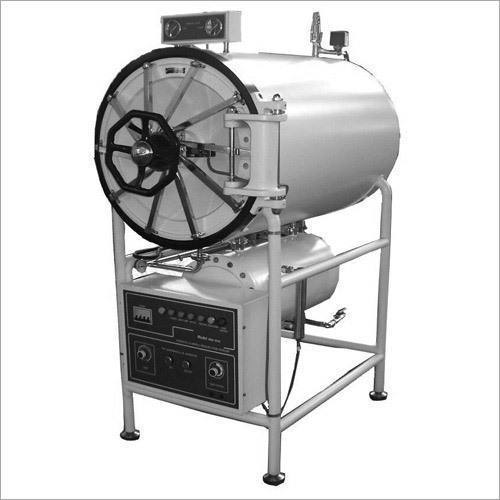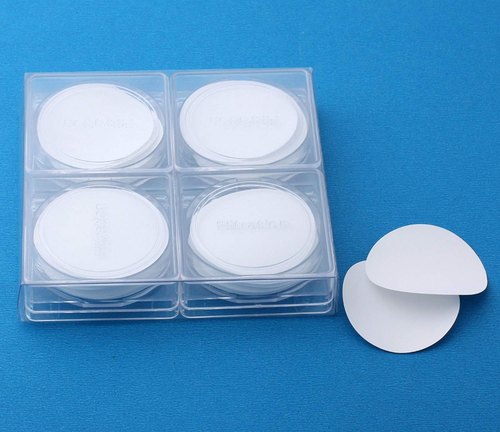PHYSICAL AGENTS OF STERILIZATION/DISINFECTION METHOD
- Sunlight
- Drying
- Dry heat – flaming, incineration, hot air
- Moist heat – pasteurization, boiling,
- Steam under normal pressure,
- Steam under pressure.
- Filtration – candles, asbestos pads, membranes.
- Radiation
- Ultrasonic and sonic vibrations.
AUTOCLAVE
PRINCIPLE OF AUTOCLAVE
- Steam under 100°C or saturated steam has a better killing power than dry heat.
- Bacteria are more susceptible to moist heat as bacterial protein coagulates rapidly. Saturated steam can penetrate porous material easily.
- When steam comes into contact with a cooler surface it condenses to water and liberates its latent heat to that surface, for example, 1600 ml of steam at 100°C and at atmospheric pressure condenses into one ml of water at 100°C and releases 518 calories of heat.
- The large reduction in volume sucks in more steam to the same site and the process continues till the temperature of article is raised to that of steam.
- The condensed water produces moist conditions for killing the microbes present.
STERILISATION CONDITIONS
OF AUTOCLAVE
- Temperature-121°C.
- Chamber pressure- 15 lb per square inch.
- Holding time-15 mins. These conditions are generally used, however, sterilization can also be done at higher temperatures at 126°C (20 lbs/square inch) for 3 mins.
USES OF AUTOCLAVE
Articles sterilized with
Autoclave
- Gowns, Towels, dressings, linen
- Glass or metal instruments
- Articles with glass & metal components
- Rubber & plastic articles
- Culture media, pharmaceutical products
Articles not sterilized
with Autoclave
- Fats, oils, greases
- Talc & other powders
- Egg & serum containing media
- Heat labile sugars
AUTOCLAVE STERLIZATION
CONTROL
- Thermocouple- It is to record the temperature directly by a potentiometer.
- Bacterial spores- Spores of bacillus stearothermophilus are used as the test organism.
- Chemical indicators – Browne’s tube contains red solution which turns green, when exposed to temperature of 121°C for 15 mins. In autoclave.
- Autoclave tapes
HOT AIR OVEN
PRINCIPLE OF HOT AIR OVEN
- It is the most widely used method of sterilization by dry heat.
- The oven is electrically heated and is fitted with a fan to ensure adequate and even distribution of hot air in the chamber.
- It is also fitted with a thermostat that maintains the chamber air at a chosen temperature.
STERILISATION CONDITIONS
OF HOT AIR OVEN
160°C for two hours (holding time) is required for sterilization. However, alternative temperatures and holding time include 170°C for one hour and 180°C for 30 mins.
USES OF HOT AIR OVEN
- It is used for sterilization of
- Glass-wares like glass syringes, petridishes, flasks pipettes, and test tubes.
- Surgical instruments like scalpels, scissors, forceps , etc.
- Chemicals such as liquid paraffin, fats, sulphonamides powders etc.
STERILISATION CONTROL OF
HOT AIR OVEN
- The spores of Bacillus subtilis subspp. Niger (NCTC 10075 or ATCC 9372) are kept inside the oven. These spores should be destroyed if sterilization is proper.
- Thermocouples may also be used.
- Browne’s tube with green spot is available. After proper sterilization a green colour is produced (after two hours at 160°C).
OTHER METHODS
INSPISSATION
Serum or egg cannot tolerate a higher temperature and hence serum or egg media such as Lowenstein-Jensen’s medium and Loeffler’s serum slope are rendered sterile by heating at 80-85°C for half an hour daily on three consecutive days.
This
process of sterilization is called inspissation. The instrument is called
inspissator.
TYNDALLIZATION
Principle
of Tyndallization:
Steam at 100°C for 20 minutes on three successive days is used.
This is known as
tyndallisation or intermittent sterilization. The principle is that the first
exposure kills all the vegetative forms, and in the intervals between the
heatings the remaining spores germinate into vegetative forms which are killed
on subsequent heating.
Uses of Tyndallization
Tyndallization
is used for sterilization of egg, serum or sugar containing media which are
damaged at higher temperature of autoclave.
PASTEURIZATION
Pasteurization
of milk is done by two types of methods.
Holder method in
which milk is heated at 63°C for 30 minutes and flash method in which heating is done at 72°C for 20 seconds
followed by cooling quickly to 13°C or lower.
All
nonsporing pathogens such as mycobacteria, brucella and salmonella are killed
except Coxiella burnetii which being relatively heat resistant may survive in
holder method.
FILTERS
- Candle filters
- Unglazed ceramic e.g. Chamberland
- Diatomaceous earth e. g. Berkfield
- Asbestos filter
- Seitz filter
- Sintered glass filter
- Membrane filters:
-Cellulose
acetate
-Cellulose
nitrate
Filters are useful for
substances which get damaged by heat process eg. Sera, sugars, antibiotic
solutions etc.
Uses of filters
- To sterilize sera, sugars and antibiotic solutions.
- Separation of toxins and bacteriophages from bacteria.
- To obtain bacteria free filtrates of clinical samples for virus isolation.
- Sterilization of hydatid fluid.
- Filter discs retain the organism which can then be cultured e.g. testing of water samples for cholera vibrios or typhoid bacilli.
- Purification of water.
INCINERATION
- All wastes expect chlorinated plastics, polyvinyl chloride containing waste e.g. dioxins and furans.
- Waste is burnt in primary chamber at 800°C.
- Volatile gas is in second chamber at 1000°C + 50°C.
- Ash generated is disposed in sanitary landfill.
RADIATION
- Two types of radiations are used for sterilization: ionising and non-ionising.
- Ionising Radiations
- They include x-rays, gamma rays and cosmic rays.
- Gamma radiations are commercially used for sterilization of disposable items such as plastic syringes, swabs, culture plates, cannulas, catheters etc.
- This method is also known as cold sterilization because there is no appreciable increase in temperature.
- Bacillus pumilis has been used for testing the efficacy of ionising radiations.
- Non-Ionising Radiations
- These include infrared and ultraviolet (UV) radiations.
- Infrared is used for rapid mass sterilization of syringes and catheters.
UV radiation is used for disinfecting enclosed areas such as bacteriological laboratory, inoculation hoods, laminar flow and operation theatres.



No comments:
Post a Comment